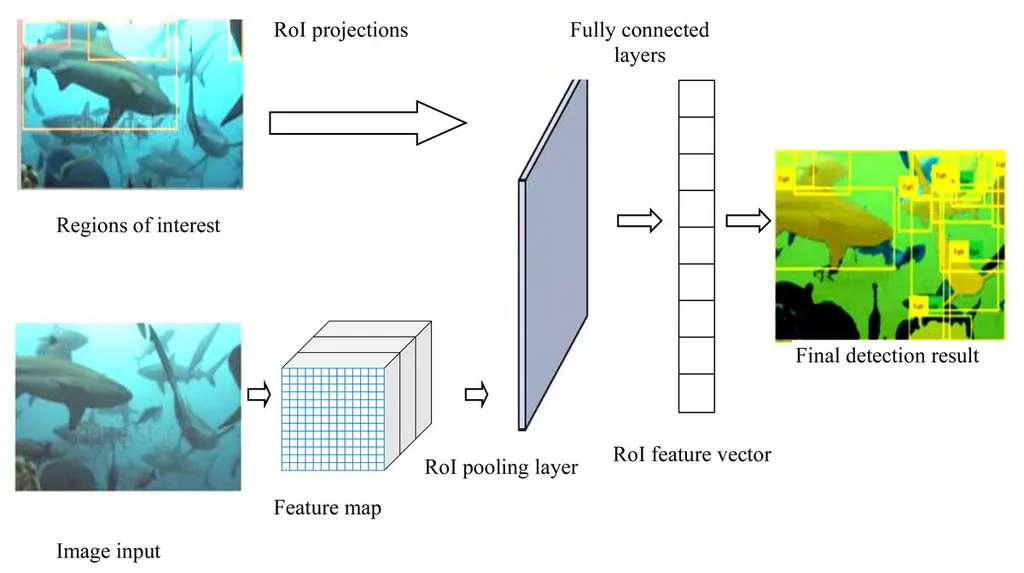In the bustling harbors and markets of Indonesia, a technological revolution is brewing, one that could reshape the way fish are classified and reported globally. Researchers have developed a novel fish classification system using a combination of YOLOv3 and ResNet18 models, designed to run efficiently on mobile devices. This innovation, published in the CommIT Journal, promises to bring precision and speed to the traditionally labor-intensive process of fish identification, with significant implications for the agriculture and fisheries sectors.
The system, developed by lead author Suryadiputra Liawatimena from Bina Nusantara University, leverages computer vision to detect and classify fish types. The model was trained on a dataset of 4,000 images, encompassing four types of fish, and achieved an impressive accuracy of 98.45% during training and 98.15% during evaluation. “The combination of YOLOv3 and ResNet18 allows for a lightweight model that maintains high accuracy, making it suitable for mobile deployment,” Liawatimena explained.
The practical applications of this technology are vast. For instance, fishermen and industry workers can use their mobile phones to quickly and accurately identify and classify the fish they catch. This not only streamlines the reporting process to the Food and Agriculture Organization of the United Nations (FAO) but also enhances the efficiency of fish processing and marketing. “This system can help reduce the time and effort required for manual classification, allowing for more efficient operations and better data reporting,” Liawatimena added.
The model’s performance on mobile devices is equally noteworthy. It achieved a processing speed of 2,115 milliseconds on a Huawei P40 and 3,571 milliseconds on a Realme 7, demonstrating its capability to function effectively on a range of smartphones. This mobility and efficiency can be a game-changer for small-scale fisheries and traditional industries, which dominate the Indonesian market.
The commercial impact of this research extends beyond Indonesia. As countries worldwide strive to improve the accuracy and efficiency of their fish production reporting, such a system could become a valuable tool. It could also facilitate better inventory management, quality control, and market analysis, ultimately benefiting the entire agriculture and fisheries value chain.
Looking ahead, this research opens up new avenues for the application of computer vision in the agriculture sector. Future developments could see similar models being used for the classification of other agricultural products, enhancing supply chain transparency and efficiency. The integration of such technologies into mobile devices could democratize access to advanced agricultural tools, empowering small-scale producers and contributing to sustainable development goals.
As the world continues to embrace digital transformation, innovations like the YOLOv3-ResNet18 fish classification system exemplify how technology can address real-world challenges, driving progress and efficiency in the agriculture sector. With the research published in the CommIT Journal and led by Suryadiputra Liawatimena from Bina Nusantara University, this breakthrough marks a significant step forward in the intersection of technology and agriculture.

